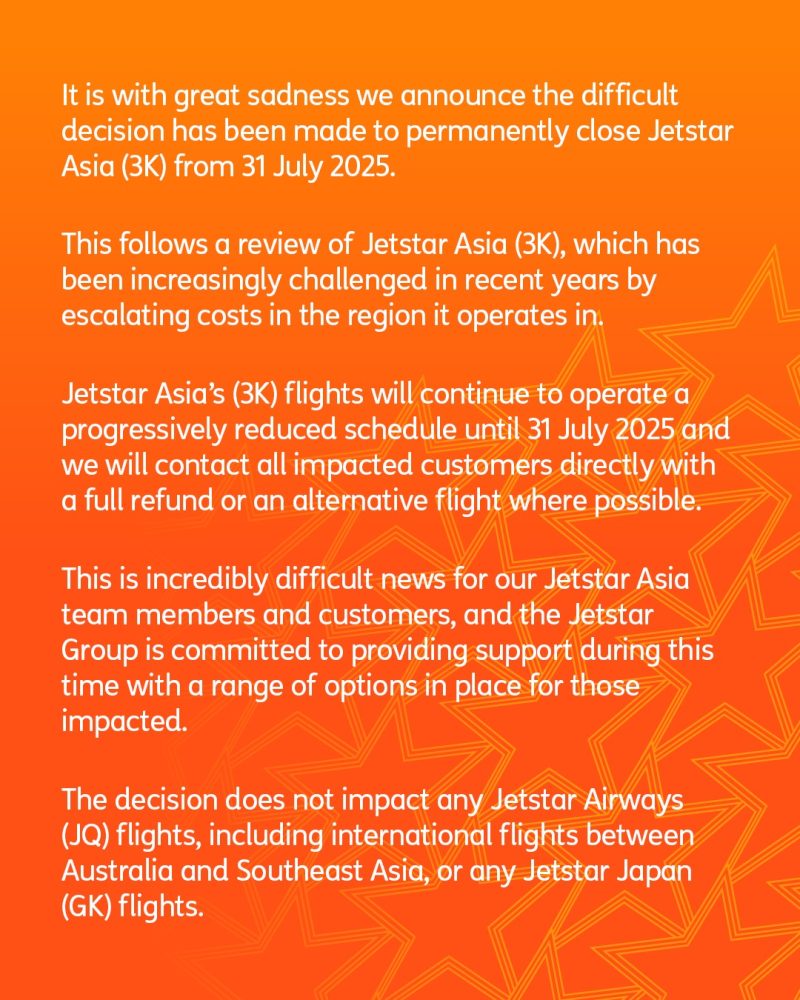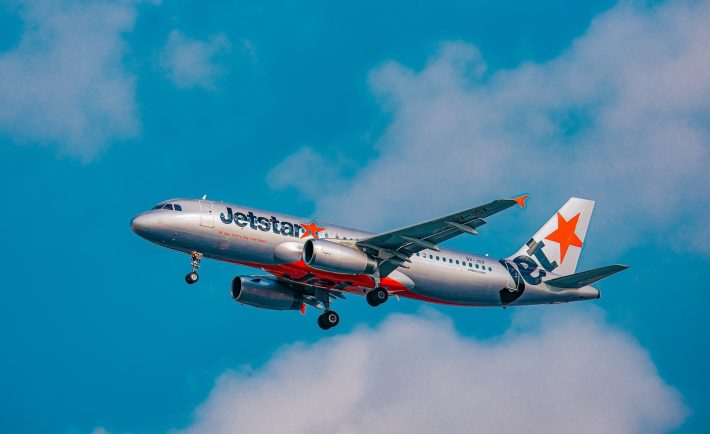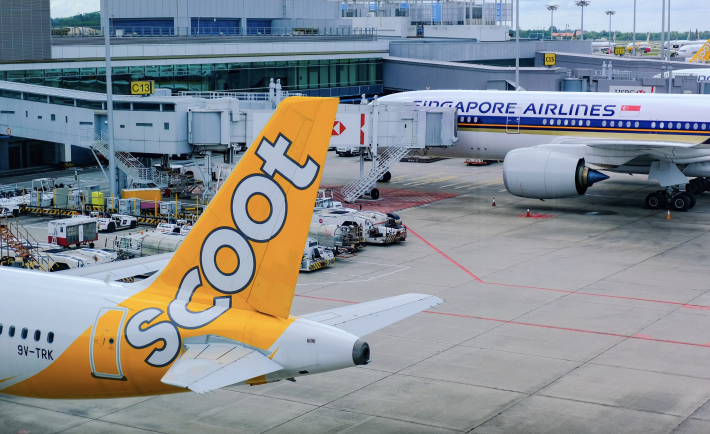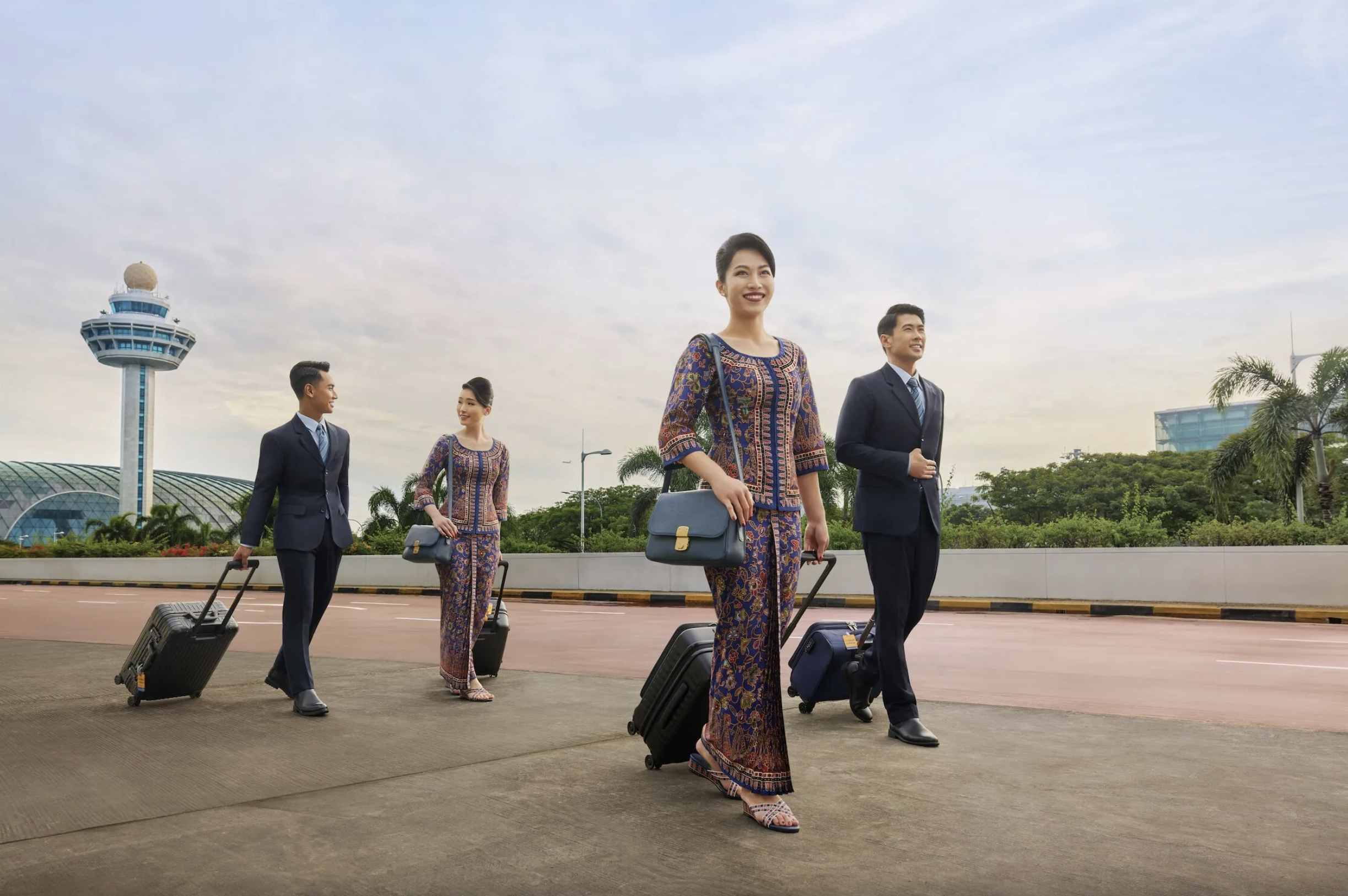For many Singaporeans, Jetstar Asia was more than an airline. It was a trusted escape, a weekend essential, and a familiar face in the skies.
Known for its budget-friendly fares and reliable service, Jetstar Asia quietly embedded itself into the routines and memories of countless travelers, especially those heading to nearby favorites like Thailand, the Philippines, and Japan.
TWO-DECADE JOURNEY COMES TO AN END
Jetstar Asia, the Singapore-based budget airline that has flown millions since its first in December 2004, has announced it will permanently cease operations on July 31, 2025. The announcement was made on June 11 through the airline’s social media channels, marking the end of a 21-year journey.

Image Credits: facebook.com/JetstarAsiaAirways
Founded as a joint venture with Qantas and Singapore’s Westbrook Investments, Jetstar Asia served 16 destinations across Asia and Australia with its fleet of Airbus A320 aircraft. It operated as an affordable link across borders, connecting Singapore with cities in Malaysia, Indonesia, China, Sri Lanka, Japan, and more.
THE IMPACT OF RISING OPERATIONAL COSTS
The airline cited rising operational costs, mounting competition, and regional overcapacity as reasons behind the difficult decision. In a statement, Jetstar Asia said:
“Despite our best efforts to offset these rising costs, they are expected to continue into the foreseeable future, putting unsustainable pressure on our ability to offer low fares.”
Jetstar Asia is projected to post an A$35 million (S$29 million) underlying EBIT loss this financial year, which is a clear signal that the financial strain had become too great to bear.
MORE THAN 500 EMPLOYEES AFFECTED
More than 500 employees will be affected by the shutdown. The airline has promised redundancy packages that include four weeks’ pay for every year of service, bonuses for the current financial year, and a “thank you” payment.
Jetstar Asia is also offering ongoing staff travel benefits for a period equal to each employee’s tenure, along with job placement support. Its parent group, Qantas, stated that it is actively working to find job opportunities across the group and with other airlines in the region.
WHAT PASSENGERS NEED TO KNOW
Customers booked on flights after July 31 will be offered full refunds or alternative arrangements where possible. Affected passengers can visit the airline’s “Manage Booking” portal to submit refund requests.
Jetstar Asia has also pledged to convert unused travel vouchers into monetary refunds. Then, Club Jetstar members will receive more information by August.
Flights will operate on a progressively reduced schedule until the final day of service.
MARKING AN END OF AN ERA
Jetstar Asia’s closure affects only its operations. Thus, Jetstar Airways (JQ) from Australia and Jetstar Japan (GK) will continue its flights. Routes between Australia and Asia, including Singapore, remain active under the broader Jetstar brand.

Image Credits: facebook.com/JetstarAsiaAirways
For frequent travelers and aviation enthusiasts, Jetstar Asia’s exit marks the end of an era. It was part of first solo trips, last-minute getaways, and long-awaited reunions. As its bright orange tailfin vanishes from Changi’s tarmac, it leaves behind not just empty gates but unforgettable memories.



